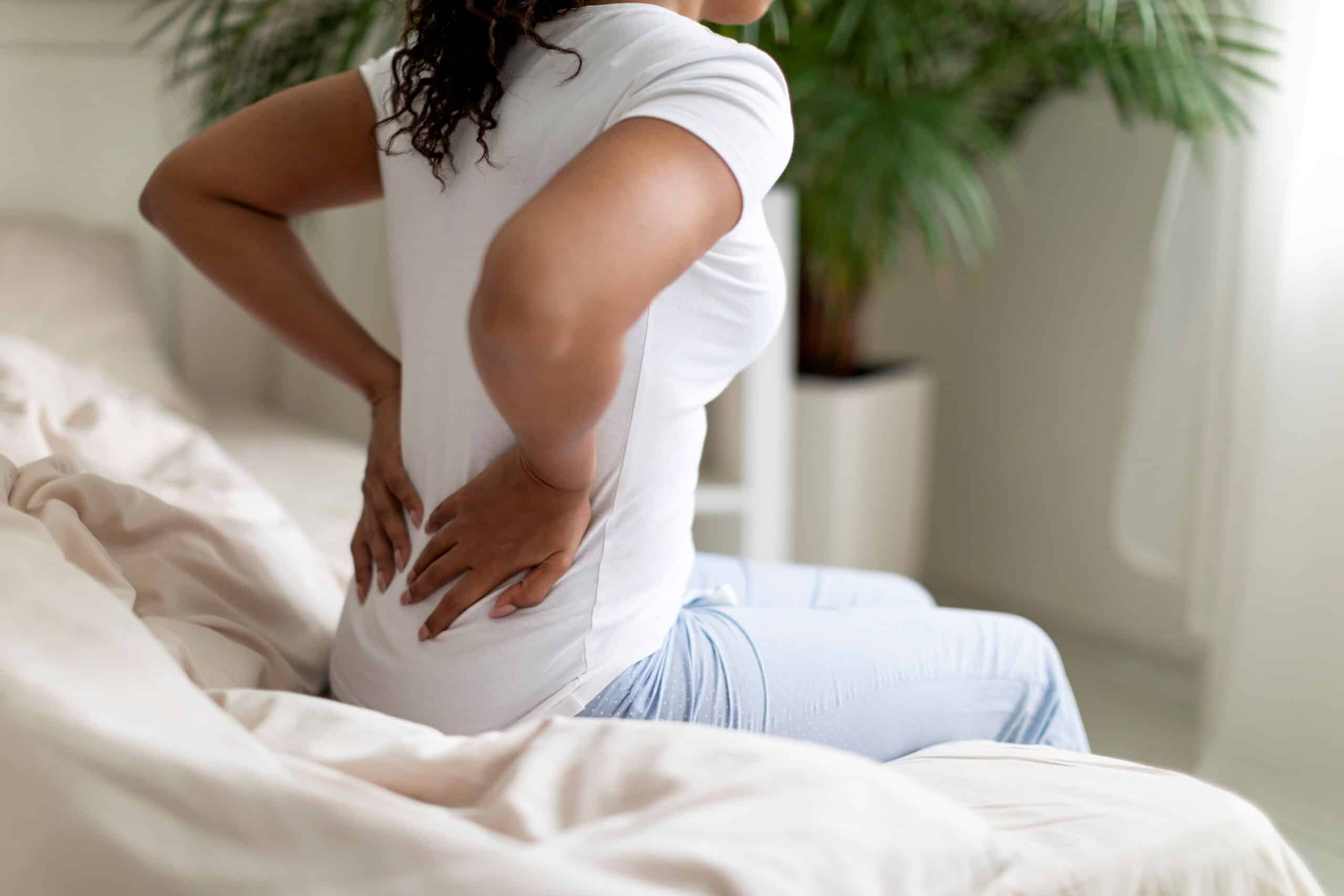By Farhan Malik, MD
Atlanta Innovative Medicine
Retrolisthesis is a spinal condition characterized by the backward displacement of a vertebra, which can lead to significant pain and discomfort. This misalignment affects daily activities and disrupts sleep, a vital component of the body’s healing process. Disrupted sleep can worsen the symptoms, creating a frustrating cycle of discomfort and restlessness. Because of this, the challenge becomes how to sleep with retrolisthesis, especially when you’re in pain.
If you or a loved one has retrolisthesis, this article will explore its challenges and guide you through lifestyle changes you can implement immediately to improve pain levels and enhance sleep quality. We’ll also discuss when it might be time to seek professional help and review the various treatment options available. Atlanta Innovative Medicine offers professional support and noninvasive, nonsurgical treatment solutions for retrolisthesis when lifestyle changes and home remedies aren’t enough.
What is Retrolisthesis?
Retrolisthesis is a spinal condition in which one vertebra slips backward onto the vertebra below it. While this displacement can occur in any part of the spine, it is most commonly found in the lumbar (lower back) region. Depending on its severity, retrolisthesis can significantly impact daily life, with symptoms that can make simple activities such as walking, bending, or lifting objects difficult and, as we mentioned, negatively affect sleep.
The causes of retrolisthesis can vary and may include trauma or injury to the spine, congenital abnormalities (structural defects present from birth), and degenerative disc disease, which involves the breakdown of the cushioning between vertebrae. Pain can range from mild discomfort to severe pain. Symptoms may also include sciatica (characterized by pain, numbness, or weakness in one leg), nerve compression, and spine instability, all of which can lead to mobility and balance issues.
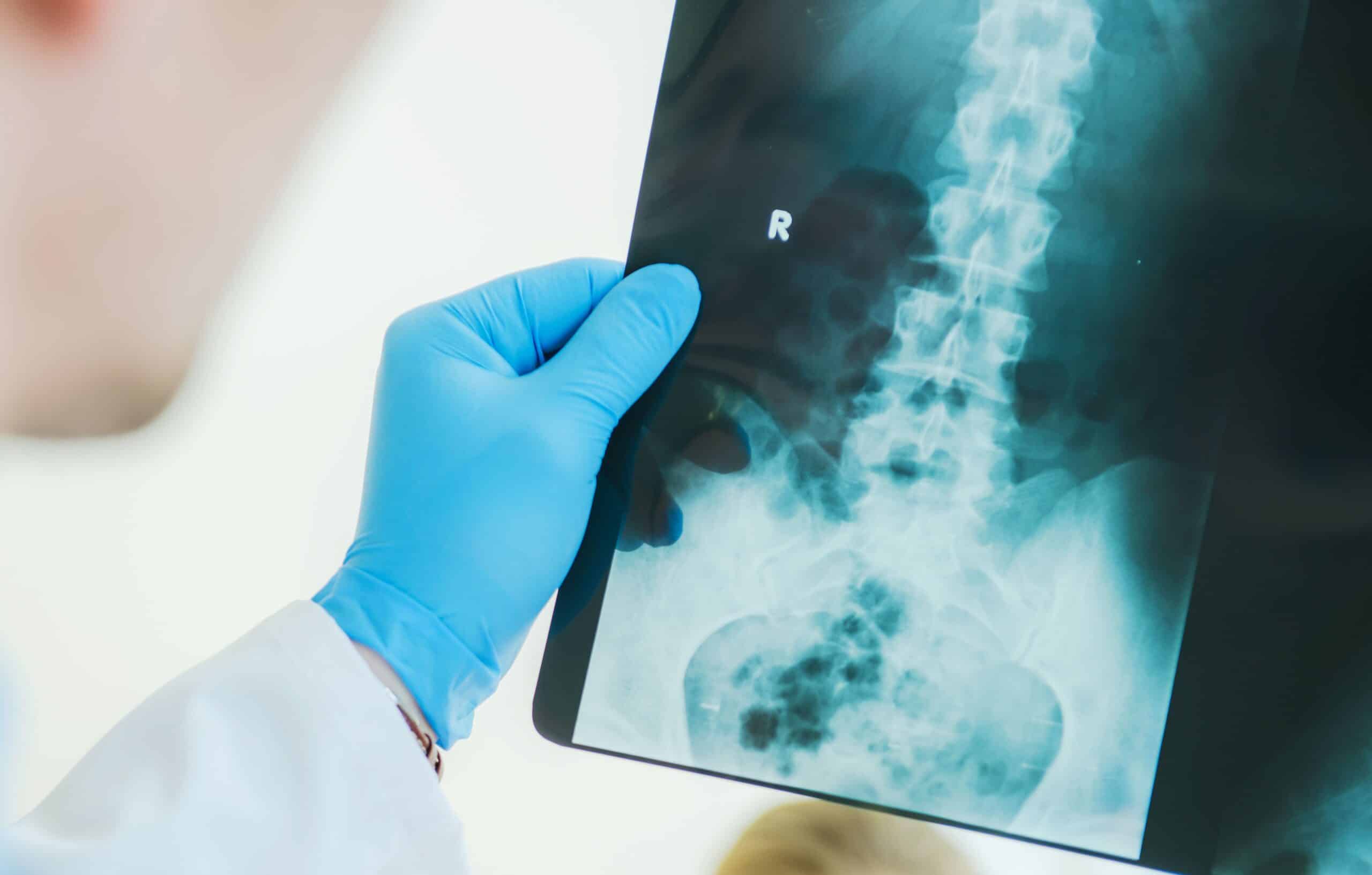
There are two primary types of retrolisthesis:
- Mild retrolisthesis involves a slight backward displacement of one vertebra in relation to the one below it. It typically presents minimal to moderate symptoms, including discomfort or stiffness in the affected area. Individuals with mild retrolisthesis often find that they can manage their symptoms through conservative measures, such as physical therapy and lifestyle adjustments, without significant pain or impairment to their daily activities.
- Degenerative Retrolisthesis usually results from age-related changes in the spine, including degeneration of intervertebral discs, ligaments, and facet joints. As these structures wear down, the vertebrae may slip backward more significantly, leading to more severe symptoms, including increasing pain, stiffness, and nerve compression that can significantly interfere with daily life. As a result, degenerative retrolisthesis often requires professional medical treatment such as physical therapy, chiropractic care, or surgical interventions.
Regardless of the cause or type, the pain and discomfort from retrolisthesis often affect sleep quality. Finding a comfortable position that relieves pressure on the spine can be incredibly challenging, so many people with retrolisthesis toss and turn—struggling to fall asleep or stay asleep. The resulting poor sleep only compounds the symptoms of retrolisthesis, creating a frustrating cycle of worsening symptoms that can leave individuals feeling exhausted, overwhelmed, and unable to heal.
Why Sleep is Critical for Managing Retrolisthesis
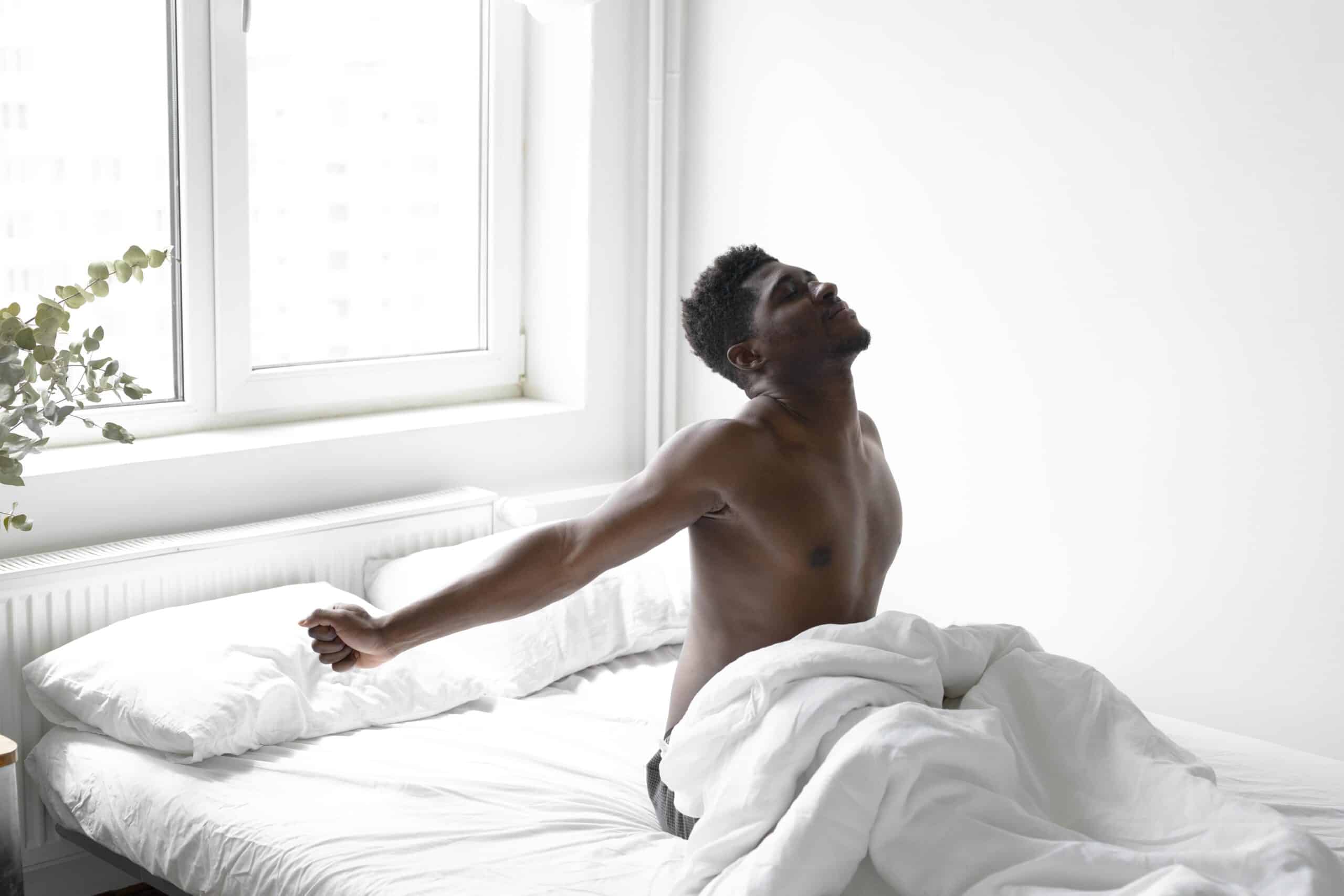
Sleep is essential for managing retrolisthesis, as it is crucial in spinal healing and reducing inflammation. During restful sleep, your body engages in vital repair processes, regenerating tissues, including those in your spine. Quality sleep also facilitates the release of growth hormones, which are key to healing and combating inflammation. On the flip side, poor sleep impedes healing, resulting in unresolved pain and inflammation that make getting restful sleep even more challenging.
How to Sleep with Retrolisthesis
By now, we trust you understand why sleep is so important for those with retrolisthesis, but you’re probably still wondering how to sleep with retrolisthesis. The answer lies in achieving proper sleep posture and promoting spinal alignment and support at night and throughout the day. By adjusting their sleeping position and incorporating gentle exercises and pain management techniques into their routine, many people have found they can effectively manage the symptoms of retrolisthesis and enjoy a good night’s sleep.

Subscribe for Expert Insights and Our Ebook
A Closer Look at Regenerative Medicine: Comparing Your Options Learn about treatment options like Platelet Rich Plasma (PRP), Prolozone Therapy, and Stem Cell Therapy.
Best Sleeping Positions for Retrolisthesis
1. Sleeping on Your Back: Lying flat on your back is one of the best positions for individuals with retrolisthesis, as it distributes weight evenly and reduces pressure on the spine. Placing a pillow under your knees can improve spinal alignment further. By slightly elevating your legs, it helps maintain the natural curve of the lower back and alleviates strain on the lumbar spine.
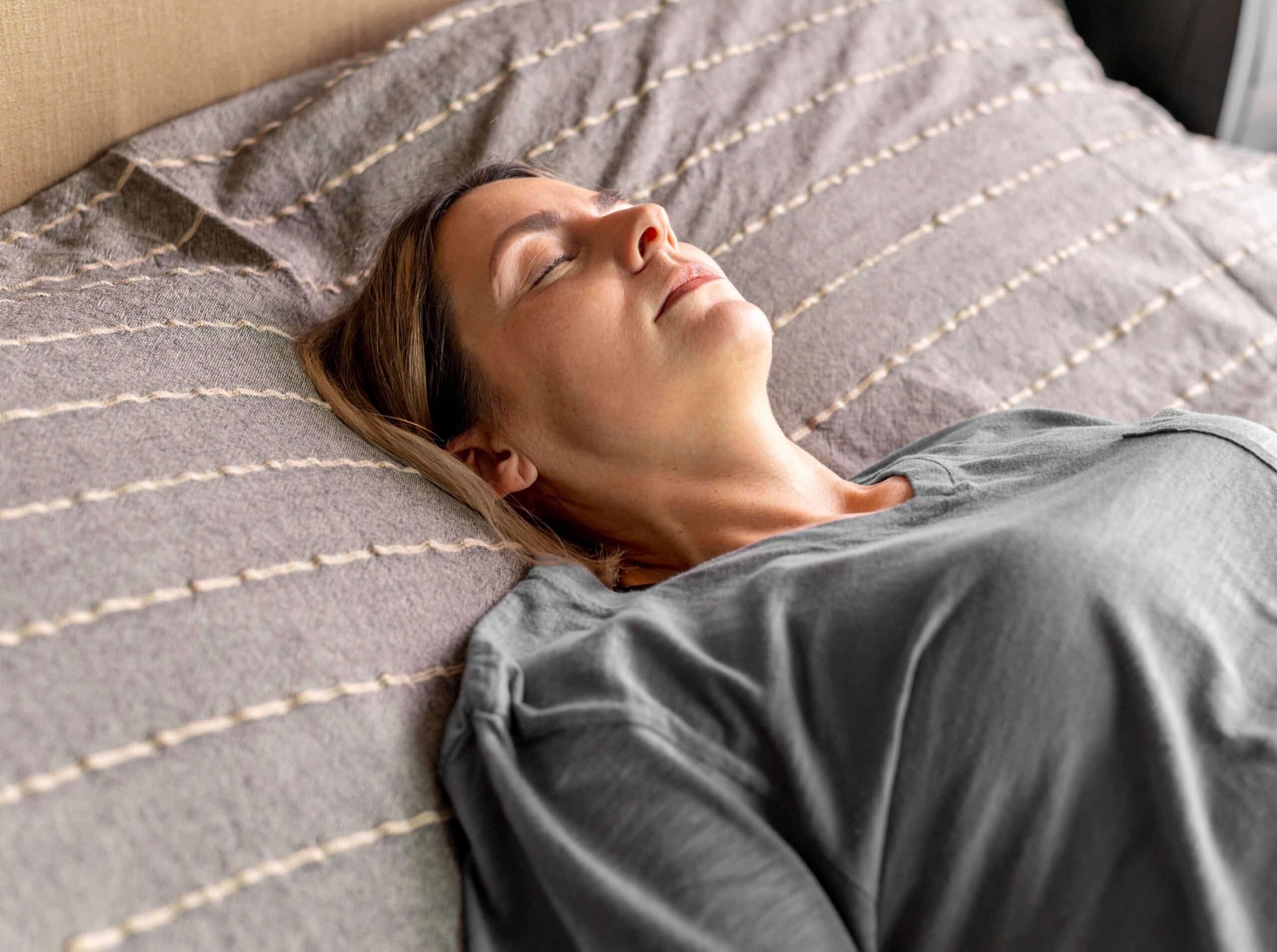
2. Sleeping on Your Side: Side sleeping can also provide relief, especially for those with mild retrolisthesis. This position reduces pressure on the lumbar spine while promoting better alignment. Place a pillow between your knees to keep your hips and pelvis level, or use an ergonomic wedge pillow to elevate the upper body slightly for even better alignment. Proper support promotes a more neutral spine position and reduces the risk of discomfort throughout the night.
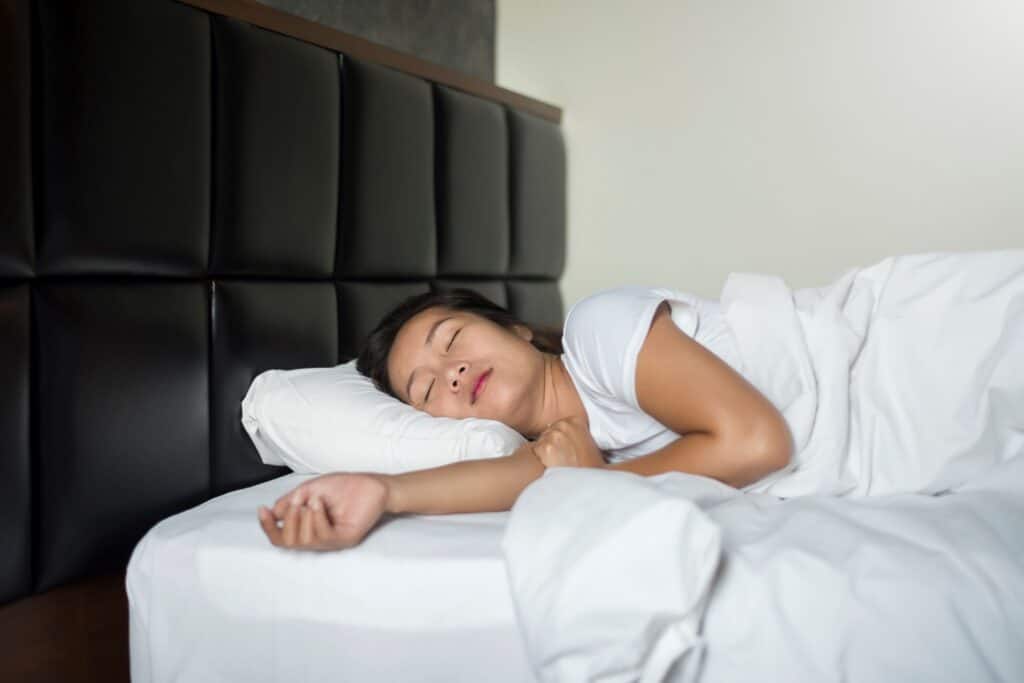
3. Avoiding Stomach Sleeping: Sleeping on your stomach can increase lumbar stress and worsen the symptoms of retrolisthesis. Stomach sleeping forces the spine into an unnatural position, increasing pain and discomfort. Just don’t do it!
Additional Tips for Better Sleep with Retrolisthesis
1. Try Gentle Stretching Before Bed: Establish a calming bedtime routine that includes targeted, gentle stretches like Cat-Cow and Figure Four to relieve lower back and hip tension.
2. Use Hot or Cold Therapy for Targeted Pain Relief: If you’re experiencing stiffness or dull pain, applying heat pads or warm towels for 15-20 minutes before bed can help reduce discomfort. Conversely, try ice therapy for acute pain or inflammation by placing an ice pack on the painful area for 15-20 minutes to decrease swelling and numb the pain
3. Utilize Sleep Aids: As we mentioned earlier, using lumbar support cushions, ergonomic wedge pillows, or a pillow between or under your legs (depending on your sleeping position) can improve spinal alignment, reduce pain, and promote deeper, more restorative sleep.
4. Maintain a Healthy Weight: Keep your weight in check to reduce pressure on your spine. Focus on a balanced diet and regular exercise to support your weight management goals.

5. Practice Good Posture: Ensure any chair you sit in for long periods offers adequate lower back support and that your feet rest flat on the floor or a footrest. Proper posture throughout the day helps prevent symptom flare-ups.
6. Take Regular Breaks for Movement: Stand, stretch, or walk around every hour to combat stiffness and promote circulation. This is especially important if you’re primarily sedentary or at a desk, as small movements help keep your muscles engaged.
7. Strengthen Core and Back Muscles: Incorporate exercises into your workout regimen that target your core and back to better support your spine. Focus on building stability and flexibility to help relieve discomfort related to retrolisthesis.

When to Seek Medical Help
In severe cases of retrolisthesis, lifestyle changes and proactive at-home pain management alone might not be enough to manage symptoms. If you or a loved one are experiencing sleep problems or pain related to retrolisthesis, it’s important to recognize when you need professional medical attention. Key indicators that you should seek help include worsening pain, persistent nerve issues, or difficulty sleeping despite trying recommended adjustments. Consulting with a medical professional specializing in spinal health, like our team at AIM, can help you find a treatment plan that’s right for you. Treatment options may include:
- Physical Therapy: Physical therapy can help strengthen the muscles around the spine, improving stability and reducing symptoms associated with retrolisthesis.
- Chiropractic Care: Chiropractors can provide adjustments and exercises specifically designed to improve spinal alignment and relieve pressure on affected areas, which may help alleviate retrolisthesis symptoms.
- Regenerative Medicine: Treatments like stem cell therapy or platelet-rich plasma (PRP) therapy can stimulate the body’s natural healing processes. This approach aims to repair damaged ligaments and discs, stabilize the vertebrae, and alleviate pain through tissue repair, anti-inflammatory effects, and improved disc health.
- Surgical Intervention: In severe cases, surgery may be recommended when other treatments are ineffective. However, many practitioners, such as our clinical team at Atlanta Innovative Medicine, focus on nonsurgical approaches first.
Our orthopedic team at AIM specializes in retrolisthesis and spinal health. If you need professional help managing this condition, we can develop a comprehensive care plan that targets the root causes, promotes long-term healing, and, in many cases, helps you avoid surgery.
Conclusion
Better sleep is critical for overall health, and for those experiencing pain and discomfort from retrolisthesis, it’s crucial in successfully managing the condition. Sleep supports the body’s healing processes and reduces inflammation, which can, in turn, lessen the symptoms of retrolisthesis. Ultimately, taking proactive measures to optimize sleep can lead to a healthier, more active lifestyle free from the limitations of lumbar pain.
Successfully managing retrolisthesis and its associated pain is possible. For mild cases, prioritizing proper sleep posture and making lifestyle changes may be all you need to find relief and promote healing. However, in more severe cases, professional intervention may be necessary to get you back on track to pain-free living and a restful night’s sleep.
If pain is keeping you awake, Atlanta Innovative Medicine is here to help. Book your free 15-minute consultation and discover what “medicine reimagined” can do for you.
Quizzes
Are you a candidate for Regenerative Medicine?
Regenerative medicine can be an effective therapy and treatment option for lasting pain relief for a variety of conditions like osteoarthritis of the knee, hip or shoulder; ACL or meniscus tears; tennis or golfer’s elbow; chronic neck and back pain; and more.
Is it right for you and your condition? Take 1 minute to answer a few “yes or no” questions that help to assess if you might be a candidate for PRP, stem cell or other nonsurgical regenerative treatments.
Are You a Stem Cell Candidate for Your Joint or Spine Damage?
Are you a candidate for Platelet Rich Plasma (PRP) Therapy?
Do I have nonsurgical options for my injured or aging joints?
Take the Pain Medications Risk Quiz

Regenerative Medicine.
Reimagined
- Advanced hybrid therapies, including Mesenchymal Stem Cell therapy combined with different mechanisms of action that synergistically come together to support ultimate healing
- More powerful PRP that’s customized, amplified and personalized
- Therapies delivered by an experienced, compassionate team comprised of multidisciplinary experts in traditional and alternative medicine working as your team: Medical Doctors, Nurse Practitioners, Physiotherapists and Chiropractors
- Advanced training through the American Academy of Orthopedic Medicine, the American Osteopathic Association of Prolotherapy Regenerative Medicine, and more
All content of this page is for informational purposes only and is not intended to serve as a substitute for the consultation, diagnosis, and/or medical treatment of a qualified physician or healthcare provider. Individual results may vary. Your medical professional can explain all the risks and potential benefits of any therapy based on your specific circumstances. At this time regenerative therapies are not FDA approved. Neither Atlanta Innovative Medicine nor its physician affiliates promise regenerative therapies as a cure for any condition, disease, or injury.
Other Atlanta Areas We Service:
© 2024 Atlanta Innovative Medicine, LLC. All Rights Reserved. AIM Scholarship Opportunity

